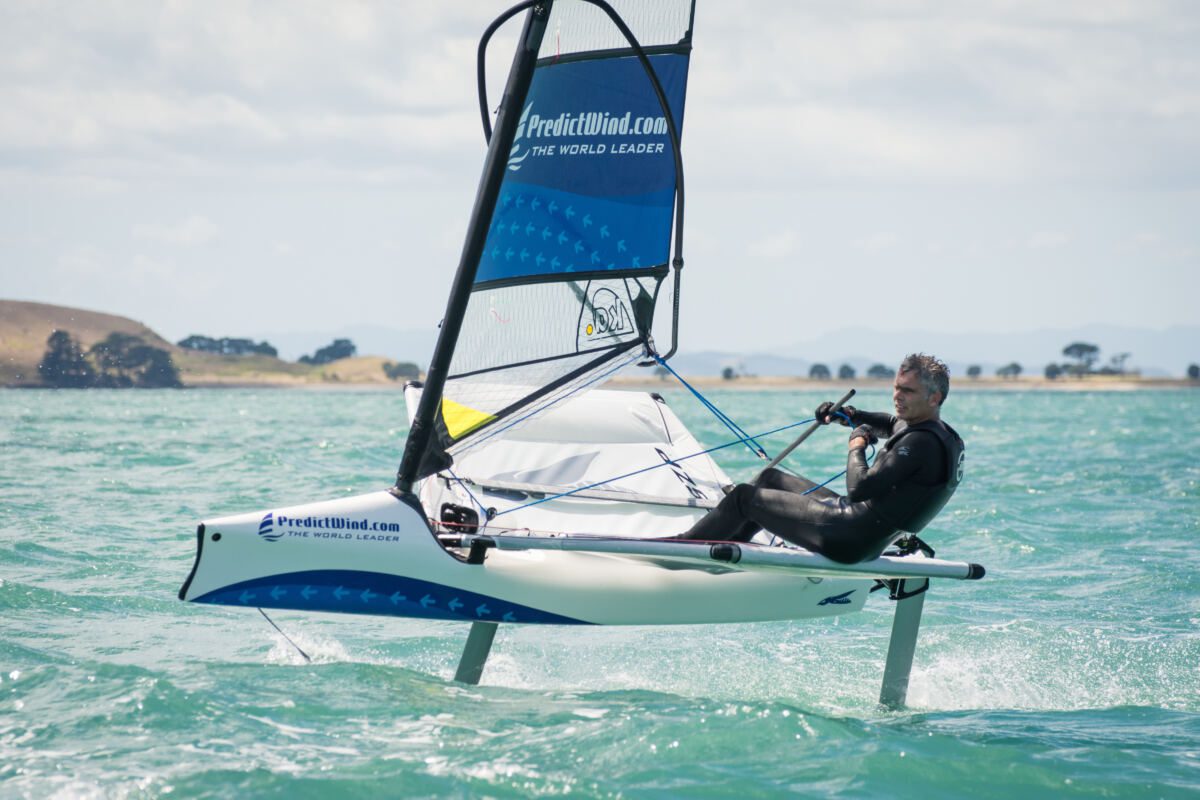In the dynamic world of competitive sailing, the fusion of tradition and technology is revolutionizing the sport. With advancements in boat design, weather forecasting, and performance analytics, sailors today navigate a vastly different landscape than those of previous decades. At the forefront of this transformation is Jon Bilger, a seasoned sailor and Olympian whose journey from the Barcelona 1992 Olympics to pioneering cutting-edge technologies epitomizes this evolution.
One might say the seas are in Jon Bilger’s genes. The son of a triple Olympian sailor, Jon set sail at the age of eight, traveling with his father to attend regattas around the world. Jon carried the family legacy forward, becoming an Olympian in his own right and competing for New Zealand in the Barcelona 1992 Olympics. He is also a two-time America’s Cup winner, a New Zealand National Champion in multiple classes, and the Founding Director of PredictWind, a passion project driven by Jon’s desire to keep mariners of all ilks as safe and prepared as possible at sea. Today, PredictWind provides the world’s most accurate and reliable forecasting technology to more than a million users.
Reflecting on his journey from Barcelona in 1992 to today, Jon Bilger’s experience is a testament to the remarkable advancements in competitive sailing. Although the courses remain similar and the objective — to be the first to cross the finish line — hasn’t changed, the technology supporting athletes has evolved dramatically. It’s ironic that Jon, who once competed in a more grassroots version of the Olympics, is now at the forefront of this technological revolution.
The Evolution of Boat Classes
The classes have changed significantly in line with advancements in boat design and materials technology. Although the 470 class I sailed in 1992 is still part of the Olympic event today, we competitors of 1992 could never have dreamed that the high-tech, extremely fast foiling classes of today would exist. From the introduction of men and women kiteboarding and IQ Windfoiling to the high-performance 49er, Nacra, and 470 mixed-gender dinghy events, there have been significant advancements over the last three decades that have taken competitive sailing to the next level.
From Meteorologists to Advanced Weather Forecasting and Routing Software
In 1992, weather modeling technology wasn’t widely used, and smartphones didn’t even exist. Due to the lack of computational power required, high-resolution weather modeling wasn’t a possibility in Barcelona.
Bilger recalls, “Our team had a meteorologist who provided generic weather forecasts, which often weren’t useful for small Olympic courses. This is a far cry from the advanced weather forecasting technology of today, such as PredictWind, which offers 1km resolution modeling technology that keeps athletes safe by making them aware of changing weather conditions and extreme weather events such as thunderstorms and lightning. But, more importantly, they tell the sailor of wind changes and differences across the racecourse that can be interpreted to help win medals!”
Performance Technology
In the lead-up to the Barcelona Olympics, they simply had a training partner and would do speed trials against each other to test performance. Although the same technique is used today, there were no advanced GPS electronics to help improve real-time performance. Competitive athletes now have access to performance tech such as Sailmon, which provides real-time feedback and in-depth analysis of their rigging, alongside tools to help them go faster, sail higher, and improve their overall skills.
Additional Insights Into How Tech Is Utilized by Today’s Olympians
- Sensor Data and Analytics: Sensors collect wind speed, direction, boat speed, positioning, and even how much the boat leans (heel angle). This data is fed into onboard computers that analyze it in real-time, allowing crews to make informed decisions about sail trim, course adjustments, and tactics.
- Hydrodynamic and Aerodynamic Modelling: Advancements in computer power have allowed for more precise modeling of how boats behave on foils (lifting the hull out of the water for reduced drag) under different wind and wave conditions. This has accelerated the development of foiling boats, making them faster and more competitive.
- Advanced Materials and Engineering: The engineering and design of high-tech carbon fiber composites have improved greatly, allowing for lighter and stronger hulls. Improved engineering principles optimize boat design for foiling and overall performance.
- Virtual Regattas and Race Simulation Software: Sailors can use sophisticated software such as Virtual Regatta to simulate races against virtual competitors in various weather scenarios. This allows them to practice tactics, test different strategies, and identify areas for improvement before ever setting foot on a real boat. The New Zealanders pioneered the use of hydrofoils in the America’s Cup a decade ago, a technology which today lifts a boat’s hull out of the water and allows for speeds of up to 50 knots.
The Irony of Evolution
It’s ironic that Jon Bilger, who once competed in a more grassroots version of the Olympics, is now at the forefront of the technological revolution that supports modern competitive sailing. In 1992, Jon relied on basic meteorological reports and traditional training methods, which now seem almost quaint compared to the sophisticated tools available today. As a sailor who experienced the sport in its more rudimentary form, Jon’s journey reflects the broader transformation of sailing — a transformation that he himself has helped drive through his work with PredictWind.
As we look forward to Paris 2024, it’s clear that the fusion of traditional sailing skills and cutting-edge technology will make for a thrilling and unpredictable competition. Jon Bilger’s journey from traditional sailing to spearheading advancements in forecasting technology embodies the transformative journey of competitive sailing itself. This evolution not only showcases the incredible advancements in the sport but also underscores the critical role that visionaries like Jon play in shaping its future.








